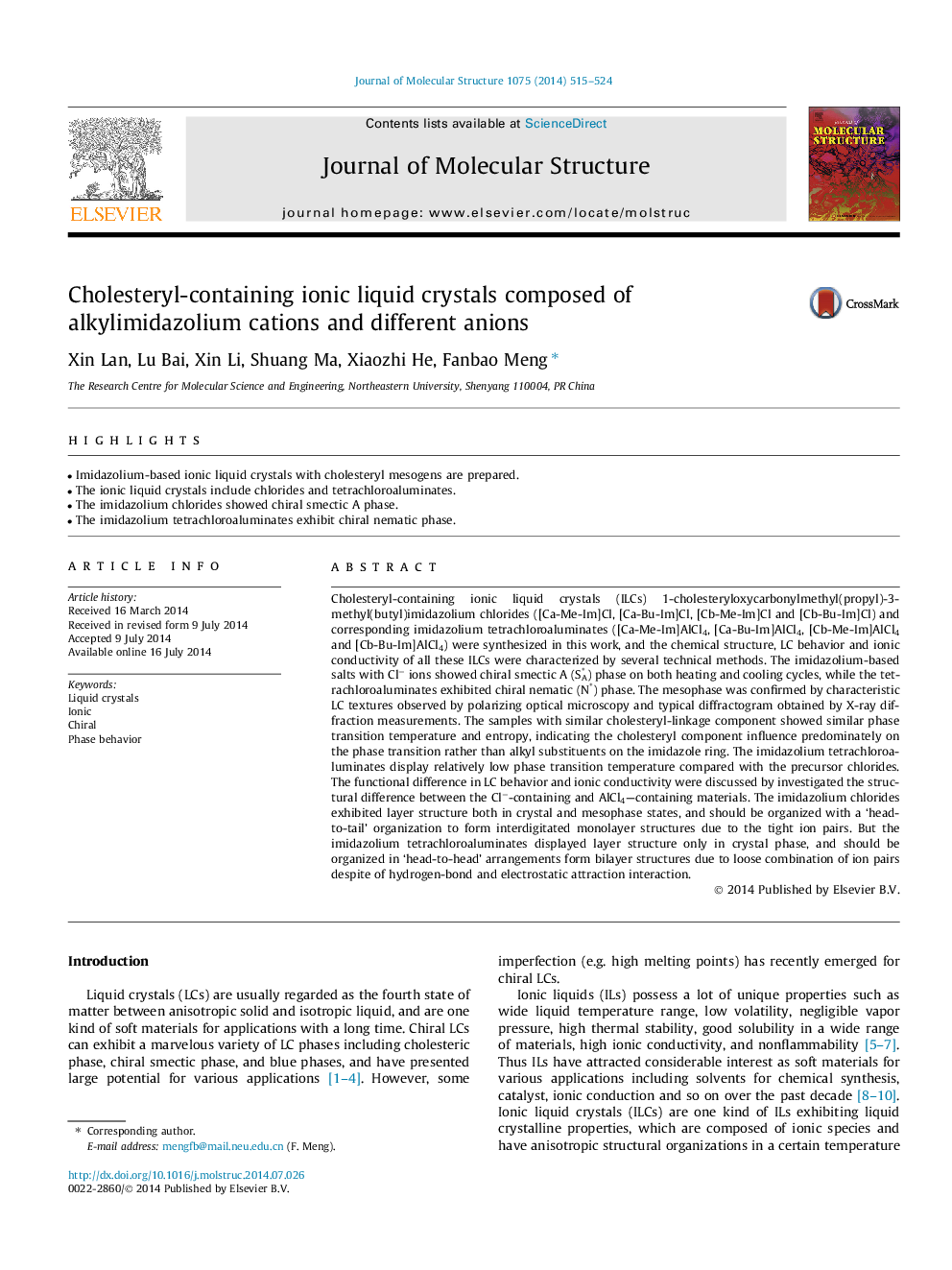| کد مقاله | کد نشریه | سال انتشار | مقاله انگلیسی | نسخه تمام متن |
|---|---|---|---|---|
| 1402320 | 1501742 | 2014 | 10 صفحه PDF | دانلود رایگان |
• Imidazolium-based ionic liquid crystals with cholesteryl mesogens are prepared.
• The ionic liquid crystals include chlorides and tetrachloroaluminates.
• The imidazolium chlorides showed chiral smectic A phase.
• The imidazolium tetrachloroaluminates exhibit chiral nematic phase.
Cholesteryl-containing ionic liquid crystals (ILCs) 1-cholesteryloxycarbonylmethyl(propyl)-3-methyl(butyl)imidazolium chlorides ([Ca-Me-Im]Cl, [Ca-Bu-Im]Cl, [Cb-Me-Im]Cl and [Cb-Bu-Im]Cl) and corresponding imidazolium tetrachloroaluminates ([Ca-Me-Im]AlCl4, [Ca-Bu-Im]AlCl4, [Cb-Me-Im]AlCl4 and [Cb-Bu-Im]AlCl4) were synthesized in this work, and the chemical structure, LC behavior and ionic conductivity of all these ILCs were characterized by several technical methods. The imidazolium-based salts with Cl− ions showed chiral smectic A (SA*) phase on both heating and cooling cycles, while the tetrachloroaluminates exhibited chiral nematic (N*) phase. The mesophase was confirmed by characteristic LC textures observed by polarizing optical microscopy and typical diffractogram obtained by X-ray diffraction measurements. The samples with similar cholesteryl-linkage component showed similar phase transition temperature and entropy, indicating the cholesteryl component influence predominately on the phase transition rather than alkyl substituents on the imidazole ring. The imidazolium tetrachloroaluminates display relatively low phase transition temperature compared with the precursor chlorides. The functional difference in LC behavior and ionic conductivity were discussed by investigated the structural difference between the Cl−-containing and AlCl4—containing materials. The imidazolium chlorides exhibited layer structure both in crystal and mesophase states, and should be organized with a ‘head-to-tail’ organization to form interdigitated monolayer structures due to the tight ion pairs. But the imidazolium tetrachloroaluminates displayed layer structure only in crystal phase, and should be organized in ‘head-to-head’ arrangements form bilayer structures due to loose combination of ion pairs despite of hydrogen-bond and electrostatic attraction interaction.
Journal: Journal of Molecular Structure - Volume 1075, 5 October 2014, Pages 515–524
